If you purchase an independently reviewed item through our site, we earn an affiliate commission. Read our affiliate disclosure.
The art of beekeeping has many challenges that affect both the beekeeper and bee colonies. These challenges often lead to mistakes by beginner beekeepers. They result in low beehive product yields and loss of honeybee colonies. Beginner beekeepers have a lot to learn, and they need not learn it the hard way. If you make a mistake as a beginner, do not be discouraged and abandon beekeeping. Most beekeepers make the same mistakes when starting, so just learn from the errors you make. This article will look at common beginner beekeeping mistakes and how to avoid them.
Common Beginner Beekeeping Mistakes
1. The Location of your Apiary
Perhaps the most common of beginner beekeeping mistakes is placing your beehives at bad location. In their interest to hide or place the beehives away from places frequented by people, they end up placing them in a bad location. The place you choose to situate your beehives should be easily accessible, and it should also allow you to work on a beehive from any position including from the rear. Thorns and fences are not ideal when near a beehive. They hinder your movement and obstruct bees flying into and out of the beehive.
A second consideration when choosing the location of your beehives, is the direction the entrance will face. The entrance of the beehive sees the most traffic of bees, which generally flows in the direction it faces. Do not face the entrance of your beehive towards a lounge or pool. Your neighbor’s backyard should also not be the direction you want your bees to frequent. The rule of thumb is to have some sort of hedge not less than a few meters from the beehive. A hedge will encourage bees to fly up away from people and animals. For one meter of horizontal distance, a bee can fly up one meter of vertical distance.
Take into account local laws when choosing the location of your apiary. Some municipalities have laws against beekeeping while others have strict guidelines that must be followed. It is very disheartening to set up your apiary and then get the authorities on your back asking you to pull it down or relocate.
2. Not Making Sure a Queen Bee is Present
A thriving honeybee colony requires many things – a queen bee most importantly. The queen lays eggs and ensures continuity of the colony. Many beekeepers at their beginner level do not know how to identify a queen bee or tell if a colony has a queen bee. Beginner beekeepers should learn how to identify the queen early in their beekeeping. They should also know what signs to look out for to tell the queen bee is present and active.
Experienced beekeepers know how to identify queen bees in their colonies. Beginner beekeepers without experience often misidentify the queen bee. The easiest way to identify your queen bee from among tens of thousands of bees is to mark her. A queen marker pen is used in this case. With a mark on her back, you will hardly miss her next time you open up the hive. Additionally, do not go looking for the queen bee in upper beehive super boxes if you are using a queen excluder.
There are a number of signs you can use to tell if a queen bee is present in the colony. These are the presence of bee larvae and eggs in cells. Without a queen bee, the population of bees in the beehive declines. Every time you open the beehive, be sure to check for the queen bee or signs of her activity. Do not make the mistake of assuming many bees in the hive mean the queen bee is present and doing well.
3. Settling for Inferior Equipment
Your beekeeping is as good as the equipment you have. You will quickly find out that beekeeping cannot be done without equipment. At the same time, the equipment you use should be the best. Inferior equipment in beekeeping results in poor honeybee colonies, low yields and high running costs. Equipment that breaks down every other day leads to delays in the production processes and these reflect in the beehive products you can harvest. It also causes you to incur high costs of replacing the equipment.
There are two ways you can acquire equipment to use in your beekeeping. Borrowing is acceptable for the first few months while you gradually buy your own stuff. Some beekeepers may not even be willing to share equipment with you, so you have to buy your own. Do not think that these beekeepers are bad, they just don’t want your bees passing diseases to theirs via shared equipment. Buy the best equipment your money can get you, from reliable and trusted manufacturers and suppliers.
Having your own beekeeping equipment prepares you for beekeeping in the long-term. You are going to be a beekeeper for many years, so be ready for it. Beekeeping is not intensive on equipment and tools. You can start with the most important equipment and buy the rest progressively as needed. As you are starting out beekeeping, prioritize the equipment you need for production such as a beekeeping suit, honey uncapping knife and hive tool. Equipment for harvesting of beehive products such as a honey extractor can be bought later in your beekeeping journey.
4. Throwing Away what can be Reused
Beekeeping tools and equipment are expensive. New beekeepers may find advice telling them to throw away some stuff once it has been used. There are items and beehive parts that can be reconditioned and used in the hive. Old frames and comb is easy to reuse in the beehive with no negative effects. Evaluate every piece of beekeeping equipment and beehive parts before throwing it away. If it can be reused without putting your bees at risk, put it back to use and save yourself the cost of buying new items.
Some beehive products that you are not using could be fed to bees too. These include old wax comb and leftover honey. Bees use these to make new comb and to feed their young. Beekeeping is not wasteful, so reuse all what you can. It is popular among beekeepers to give comb to their honeybees to clean off after harvesting honey. The bees do a good job and benefit from the additional nutrition you give them.
Some sources encourage you to discard or burn wooden parts of the beehive. These may be boxes, frames or other beehive parts. Before rushing to dispose these off, consider if they can be reused in their form or used to make something else useful in beekeeping. Old beehive boxes can be used as swarm traps and to hold frames when cleaning or wiring them. Old frames can also be cleaned and reused in the beehive. Their age makes bees take to them faster than new frames.
5. Ignoring Pests and Parasites
Pests and parasites of honeybee colonies are something you should not ignore. Beginner beekeepers have young colonies that can be very easily overwhelmed by pests and parasites. They should take time to know the common pests and parasites of bees in their area. Identifying attacks and infestations early is important if you hope to save your honeybee colony from total destruction. In severe infestations, honeybees may abscond from the hive, leaving you without your precious bee colony.
Varroa mites are a parasite of honeybees that beginner beekeepers should be on the lookout for. Identify Varroa mites early and take measures to rid the hive of this destructive parasite of honeybees. Beginner beekeepers should not make the mistake of thinking that the honeybee colony will fight off an infestation of any pests or parasites. In controlling these pests and parasites, be sure to follow guidelines and laws of your county. Some pesticides you may want to use are banned from use in some jurisdictions. Find out if the control method you intend to use is allowed in your locality.
Pests such as yellow jackets and robber bees prey on weak honeybee colonies. This is likely to happen with beginner beekeepers. By taking away the stocks of resources your bees have built up, these pests leave your colony in a bad position for winter. Identify and remove nests of hornets and yellow jackets from near your beehives. Bees can effectively fight off some invasions by these pests. Use entrance reducers to help your young honeybee colony with beehive defense.
6. Going at it Solo
Beekeeping is not a solitary activity. Take time to connect with other beekeepers near and around you. This interaction between experienced and beginner beekeepers keeps beekeeping alive. By rehashing old stuff, experienced beekeepers refresh their memories and the wealth of knowledge they have. At the same time, beginner beekeepers learn from the experienced ones about how to keep strong honeybee colonies. They also get information and tips on the best beekeeping practices they should use in their beekeeping.
Joining a beekeeping club is advised for all beekeepers. If there is no beekeeping club in your area, form one. A beekeeping club is a great point of contact between beginner and experienced beekeepers. At the club, you can get information about disease and parasite outbreaks as well as how to fight them. Additionally, government extension services will be glad to work with you through your beekeeping club than as an individual beekeeper.
An additional benefit of joining a beekeeping club is the opportunity to borrow relevant items from fellow beekeepers. Go slow on borrowing of equipment. Only borrow equipment from beekeepers you are very friendly and familiar with. You should also be sure that the beekeeper you are borrowing equipment from practices good beehive and equipment hygiene. This is because equipment can transmit diseases between bee colonies. Books are a common item borrowed between beekeepers at clubs. Have a few copies of beekeeping guides and manuals to share. You will also get texts from the other beekeepers at your club. These all add to the knowledge you have about beekeeping.
7. Evaluating Colony Health by Beehive Traffic
Bees going into and coming from the beehive is not an indicator of colony health. Drawing conclusions about bee colony health just by observing traffic at the beehive entrance, is another of the common beginner beekeeping mistakes. It is good to check out the beehive and see if bees are going and coming, but this is not a conclusive measure of colony health. Honeybees are very active at foraging for nectar and pollen. They are also more active when the weather is warm and in spring when there are many flowers in bloom.
A healthy colony is important for your success as a beekeeper. Your first colony and how you work with it determine a lot about how good a beekeeper you will be in future. Beehive inspections are the surest way to determine if your colony of honeybees is doing well or not. You should try out tools such as a beehive inspection checklist in your beekeeping. It helps you keep track of what to look out for. Regular inspection for diseases, pests and parasites allows you to address any problems early on before they overwhelm the colony.
Inspecting your beehive is necessary and a good beekeeping practice. However, do not overdo it. A beehive that is opened too often is interpreted by bees as being insecure. The bees will leave the beehive or supersede the current queen bee. Make sure that every beehive inspection you carry out is necessary. Go through the inspection properly and quickly without causing unnecessary harm or upset to bees in the beehive.
8. Going Minimalist on Protective Gear
Being around bees and working with beehives is the backbone of beekeeping. Beginner beekeepers should recognize that bees get agitated and may turn hostile. Protective gear against bee stings is a must-have for all beekeepers. Some people are not allergic to bee stings but many stings can land you in hospital. Avoiding bee stings requires you to have good protective gear. This includes a beekeeping suit, boots and gloves. A veil should also be among your beekeeping protective gear. Wear the protective gear every time you are working with your bees.
Purchase protective gear from reliable sellers. You are going to be working around bees in all types of weather and in all the seasons. It is important to have protective gear for both warm and cold weather. Beginner beekeepers sometimes lack protective clothing for some types of weather and visit the beehive without adequate protection from bee stings. They may get stung and cause the bees to get very agitated. Such a bee colony could go further to attack any people and animals in the area.
Using smoke during a visit to the beehive contributes to your protection. Smoke triggers bees to gorge themselves on honey. While they are doing this, you easily go about your activities. Additionally, use smoke on areas where you are stung to mask the pheromones released when a bee stings you. As you gain experience working with bees, you may try emerging methods of calming bees such as spraying them with sugar syrup in place of smoking the hive.
9. Ignoring Diseases of Bees
A number of diseases attack bees. They can spread rapidly within a colony and across an apiary of several beehives. These diseases are identifiable easily and easy to control with the right methods. As part of your research before starting beekeeping, find out how to identify the most notorious diseases of honeybees. Spotting the diseases early enables you to control them before they cause devastation to your honeybee colony. These diseases include the foulbrood diseases and chalk brood. Some diseases of honeybees are classified as notifiable. Beekeepers seeing these diseases in their honeybee colonies are expected to notify authorities and fellow beekeepers.
Diseases of bees are caused by various agents and accelerated by a number of factors. Viruses, bacteria and fungi all attack bees in various ways. They cause diseases with varying degrees of impact on the honeybee colony. Factors such as ventilation and queen genetics also contribute to the ability of some diseases of honeybees to take a hold on the colony. Beginner beekeepers should be aware of these factors as well as how to control them. Some pests of bees also spread diseases or cause conditions in bees which are classified as diseases.
Treatments for diseases that have been identified in the honeybee colony are available. The beekeeper is expected to identify the disease causing problems in their colony and seek the right treatment. Applying treatments is also mostly the job of the beekeeper. Beginner beekeepers may ask for help from an experienced beekeeper with identifying diseases and applying treatment until they have enough experience.
10. Not Doing Enough about Security
Security or beehives is a very important requirement. It encompasses security from wild animals, destructive insects and humans. Wild animals such as bears attack beehives in search of honey and may cause irreversible damage to the beehive and honeybee colony. People with ill intentions steal beehives and the bees in them. Others may steal the beehive frames of interest to them such as those with brood or with stored honey. Securing the beehive against these intruders of different types makes sure your bees are safe and that you enjoy the benefits of your beekeeping.
A fence around your beehives is sure to keep most unwanted animals and (some) people out. The height at which you place the beehive also helps with some destructive insects. From experienced beekeepers, beginners learn the various methods used to keep insects and animals at bay. They include use of chemical agents. Deterrents are the best protection for bees against animals and insects. It is better to prevent the attack than find ways to help your honeybee colony recover from an attack.
Protecting beehives from people is important. First, it keeps the bees from excessive contact with people. Bees that are often disturbed by movement may turn aggressive and sting people. This could cause you a lot of problems with your neighbors and the authorities too. Second, there are people who would steal beehives from your apiary. These beehive thieves are mostly beekeepers or people with beekeeping know-how. Beekeepers use various devices including cameras and GPS trackers to prevent thefts and help recover stolen beehives.
11. Making a Huff over Swarming
Large colonies of will bees split and one half swarms away. This is natural bee behavior. While swarming may not occur in your first year as a beekeeper, be ready to see it happen. Beginner beekeepers may get excessively concerned when they see their honeybees swarming away. They may then engage in various activities in an effort to prevent swarming. It is fun and exciting, but do take time to learn the basics of beekeeping before trying them out. These activities include queen rearing and splitting hives. If you are not well equipped with knowledge on how to carry out these activities, you may harm your honeybee colonies.
Allow bees to split colonies and swarm away if they want to. The colony that remains in the hive is large enough to keep the beehive going. Swarming does not occur because of any mistake by the beekeeper. Do not beat yourself over why a colony swarmed away. The only cause for concern is if you have mismanaged an aspect of beekeeping and the entire colony abandons the beehive.
Experienced beekeepers know how to identify preparations for swarming and prevent it. On the other hand, swarming behavior is an indicator that you have maintained the bee colony well. A weak honeybee colony has low numbers of bees and does not exhibit swarming behavior. After your honeybee colony splits and swarms, invite an experienced beekeeper to inspect the remaining honeybee colony. The beekeeper will advise you on the colony strength and if it is necessary to have supplementary feeding for the colony.
12. Keeping a Dirty Hive
High standards of cleanliness and hygiene are needed in beekeeping. The bees themselves are good at cleaning the hive. They only release their fecal matter from the body while outside the hive in flight. Bees are also constantly looking out for trash in the hive and taking it out. The beekeeper should help bees with hive hygiene too. Beginner beekeepers may not be aware of this. There are a number of beehive maintenance practices and equipment that you can use to encourage good hive hygiene. Features of the beehive such as good ventilation also contribute to improved hive hygiene.
Not cleaning the hive and parts of the beehive is among the common beginner beekeeping mistakes. This is the periodic cleaning required to keep the hive, frames and other beehive items clean. Wax and propolis on some parts of the hive should be removed. Excess comb left lying around in the hive is an attractant to hive beetles and other pests of honeybees. Grooming behavior in bees keeps them clean and free of parasites such as Varroa mites. The use of sugar powder or syrup sprayed on bees triggers grooming behavior and increased removal of the parasites.
Screened bottom boards are controversial in their use. Some beekeepers advocate for their use while others are opposed. The openings in screened bottom boards allow debris out of the hive onto the ground. This is unlike solid bottom boards that retain debris in the hive. Weigh the benefits of using screened bottom boards in your beekeeping against their said drawbacks before settling on a verdict.
13. Starting Beekeeping while not Ready
Beginners in beekeeping are often driven by their desire to conserve bees or by the allure of profits from beehive products. Whatever is motivating you to join beekeeping, be ready to read up and learn in a steep curve about beekeeping. The average beginner beekeeper should read a minimum of 3 beekeeping books before buying their first beekeeping equipment. They should then keep searching for and reading beekeeping content from various sources throughout their beekeeping life. Exchange books at beekeeping clubs with other beekeepers to expand your range of beekeeping knowledge.
A complete set of beekeeping books that should be read by beginner beekeepers covers varying skill levels. A beginner beekeeper should go for a beginner level book, an intermediate level book and an expert level book. The information and tips they get from the books will help the beekeeper through their first year of beekeeping. After that, the beekeeper must seek out more intermediate and expert beekeeping texts.
The internet is rife with content about beekeeping. Some of this content is really great (like what we here on BeeKeepClub provide) while some are not very useful. Additionally, some of the content you find on the internet may be shallow and missing on some details. These gaps in details may leave you in a precarious position with your honeybee colonies. With your beekeeping know-how and the help of an experienced beekeeper, try to decipher and apply the information you may find on the internet about beekeeping. Additionally, it is great to compare information from various sources and decide what to make use of, and what to discard.
14. Beginning with a Single Hive
Your decision to start beekeeping may be hindered by financial capital. However, that is not reason enough to start beekeeping with a single hive. You might argue that you want to get the experience first and then expand your apiary, but you will be operating at high running costs with little returns. The investment required for a single hive setup does not differ greatly with what you need for additional beehives. Items such as protective clothes, hive tools and extractors are used across the beehives. Removing these costs, the capital required for additional hive setups gets greatly reduced.
The biggest problem with having only one hive is that if something goes wrong in that single hive, you will have to start over in the following year. This may discourage the fainthearted from beekeeping, yet they would have made great beekeepers with time.
The best number of beehives for beginners is between 2 and 5. This gives you enough beehives to quickly learn from while not being overwhelming. Purchasing equipment and tools to manage 2-5 beehives is not expensive. If you are successful managing honeybee colonies in the beehives, you will get good returns when you harvest beehive products from the hives. Beginner beekeepers also find it easy to carry out hive maintenance activities on this small number of hives. On the first hive, the activity will feel new and difficult, even complicated. By the time you are carrying out the maintenance activity on the fourth and fifth hives, you will feel it coming to you naturally.
15. Harvesting in your First Year
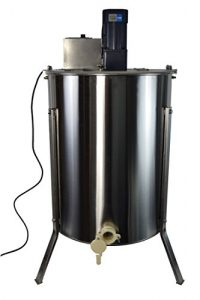
It is great to be upbeat about enjoying the fruits of your beekeeping, but do not expect any harvests in your first year of beekeeping. In your beekeeping journey, always leave bees in their first year to keep all the resources they have accumulated. They need the resources for survival more than you need them for profits. Honey is stored food reserves for bees. On cold days and seasons when foraging is not possible, bees eat honey. Not harvesting anything in the first year applies to wax too. The wax we harvest from beehives is the comb that bees have drawn on frames. This comb is used for either brooding or storage of honey. If you remove any of the comb, you leave your bees with less ready space to raise young ones or store honey.
Harvesting of honey in the first year is of the worst beginner beekeeping mistakes! This leaves the honeybee colony without adequate food reserves to see the colony through winter. If the colony survives winter, it is too weak in spring to build its numbers! For the first year, let the honeybee colony build its numbers. It will be better at foraging and hive defense.
In your first year of beekeeping, draw contentment from the experiences you have learned about beekeeping. You should also feel proud that you have successfully kept a beehive through a full year cycle and emerged victorious. In your second year, you will be free to harvest honey and other beehive products if you wish to.
Conclusion
These common beginner beekeeping mistakes are avoidable. Keep them in mind as you start your beekeeping operation. Additionally, take your time to encourage more people to start beekeeping. Learn all you can about beekeeping before you launch your apiary. You should also take time to think about what could possibly go wrong in your beekeeping operation and prepare to tackle it. Sometimes in beekeeping, the question is what not to do to mess up your bees and the entire beekeeping operation. Learn from these common beginner beekeeping mistakes made by beekeepers before you, and avoid them using the given tactics outlined in this article.
Which beginner beekeeping mistakes have you made during your beekeeping journey? Leave a comment below and let us know.
 BeeKeepClub Resources and Guides for Beekeepers
BeeKeepClub Resources and Guides for Beekeepers


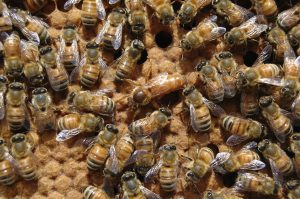

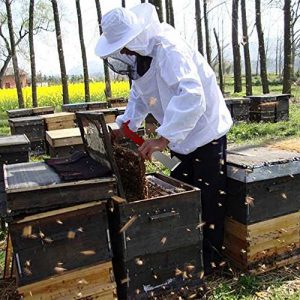



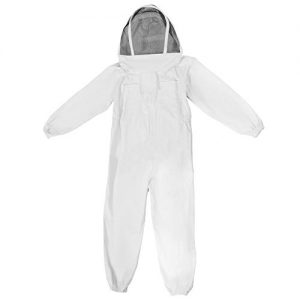




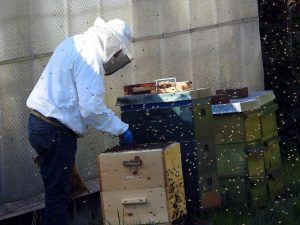

A great article. I feel you have been watching myself and my son in law over the last 12 months. Absolutely uncanny.
Thank you for such sound advice. I think the most important is to just keep the hives through that first winter, and not be too eager to get honey. We did that with two small swarms last year, and now have 4 strong hives . All from swarms we have caught.
Looking forward to many more articles.
Hi David, this really means a lot, thank you!